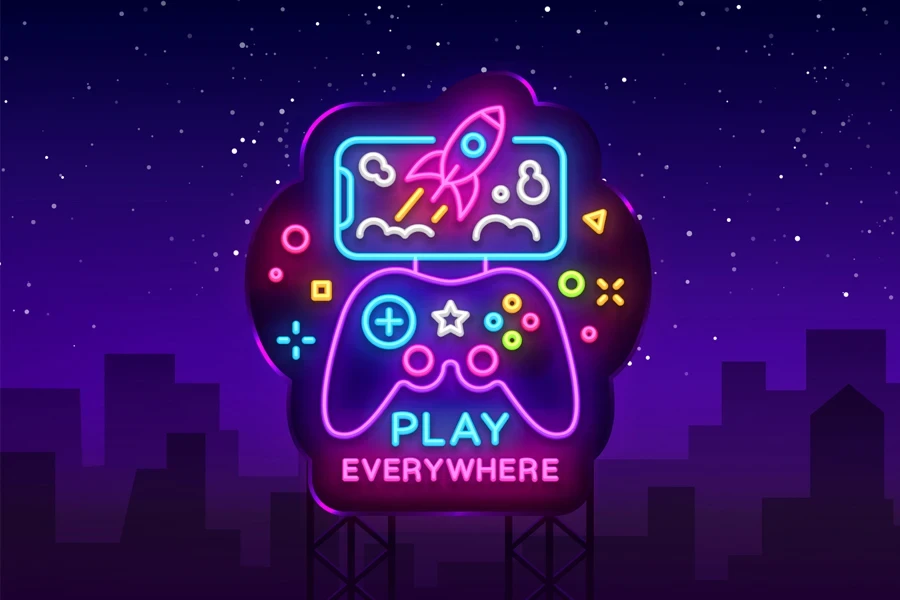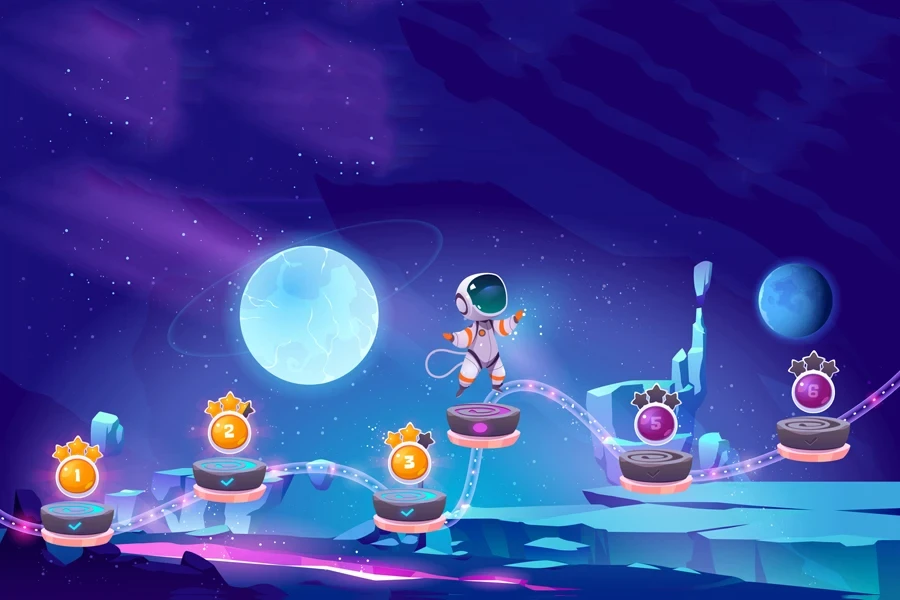Table of Contents
1. Introduction
2. Types and usage of game development software
3. Market insights
4. Essential selection criteria
5. Conclusion
Introduction
Selecting the right software of game development is a pivotal decision for businesses aiming to achieve success in 2024. These software encompasses tools for both development and design, offering robust features that streamline the creation of interactive and engaging digital experiences.
By leveraging advanced functionalities, businesses can enhance productivity, ensure high-quality outputs, and stay competitive in the ever-evolving market. Whether it’s for creating immersive 3D environments or detailed character designs, the right game software empowers teams to innovate efficiently and effectively, driving overall business growth and customer satisfaction.

Types and usage of game software
Development powerhouses
Unity, Unreal Engine, and Godot stand out as leading game development software, each offering unique features tailored to different project needs. Unity is celebrated for its cross-platform capabilities, supporting over 20 platforms, including desktop, mobile, console, and VR/AR. Its versatility makes it ideal for developers aiming to reach a broad audience. Unity also provides extensive tools for real-time 3D content creation, making it a popular choice for both indie developers and large studios. The software supports AI integration for enhancing character animations, narrative design, and automated play testing, significantly boosting productivity and creativity in game development.
Unreal Engine, developed by Epic Games, is renowned for its advanced graphics capabilities and is widely used in AAA game studios. It excels in producing high-fidelity visuals and realistic environments, making it the go-to tool for developers aiming for top-tier game quality. Unreal Engine’s Blueprint visual scripting system allows for complex game mechanics without extensive coding, which is beneficial for designers focusing on visual aspects. The engine’s real-time rendering features are also leveraged in industries beyond gaming, such as film and automotive, highlighting its versatility.
Godot is an open-source game engine that offers a flexible and user-friendly interface, suitable for both 2D and 3D game development. It supports a variety of programming languages, including C#, C++, and its own GDScript, which is similar to Python. Godot’s lightweight architecture and scene system make it highly efficient for smaller projects and indie developers. Its open-source nature allows for extensive community contributions, ensuring continuous improvements and support.
Design masterpieces
Nuclino and ZBrush are essential tools for game design, focusing on documentation, planning, and character modeling. Nuclino is a comprehensive platform that aids in organizing game design documents, facilitating real-time collaboration among team members. Its integration of Kanban boards and AI-powered assistants streamlines project management, making it easier to track progress and manage tasks efficiently.
ZBrush is a leading digital sculpting tool used extensively for creating detailed character models and high-resolution textures. Its advanced features enable designers to create intricate and realistic characters, which are crucial for immersive game experiences. ZBrush’s ability to handle complex models with millions of polygons makes it a preferred choice for professional game designers and artists.

Tailored solutions
RPG Maker, GameMaker Studio 2, and Construct 3 cater to specific game development needs, offering user-friendly interfaces and specialized features. RPG Maker is designed for creating JRPG-style games without the need for extensive coding. Its drag-and-drop interface and pre-built assets allow developers to focus on storytelling and gameplay mechanics, making it ideal for hobbyists and beginners.
GameMaker Studio 2 is another accessible tool that supports both 2D and 3D game development. It offers a visual scripting language, GML (GameMaker Language), which simplifies the coding process. GameMaker Studio 2 is well-suited for developers looking to create games quickly and efficiently, with a strong focus on 2D platformers and mobile games.
Construct 3 is a browser-based game development platform that emphasizes ease of use and rapid prototyping. It allows developers to create 2D games with a visual scripting interface, eliminating the need for traditional coding. Construct 3’s cloud-based system enables collaborative development and easy sharing of projects, making it an excellent choice for small teams and independent developers.
Market insights
Market dynamics
The video game software market is experiencing robust growth, driven by several key factors. In 2024, the market is projected to expand from $248.29 billion in 2023 to $277.54 billion, representing a compound annual growth rate (CAGR) of 11.8%. This growth is fueled by the increasing prevalence of in-game purchases, freemium models, and the influence of gaming influencers and live streamers. The rise in smartphone usage and higher disposable incomes also contribute significantly to this expansion.
Emerging markets play a pivotal role in this growth, with economic stability and rising investments in the gaming sector. Developed economies maintain steady growth, while emerging markets are projected to grow slightly faster. For instance, in the UK, there was a 63% increase in the number of gamers since 2021, highlighting the expanding gaming population’s impact on market dynamics.
Major industry players are increasingly focusing on innovative solutions to enhance their market positions. Companies are investing in game development studios and integrating new technologies to stay competitive. For example, Microsoft’s acquisition of Activision Blizzard for $68.7 billion aims to bolster its market presence and technological capabilities.
Innovative trends
Technological advancements are reshaping the video game software market, with several trends set to define 2024. One significant trend is the integration of augmented reality (AR) and virtual reality (VR) technologies. These technologies are becoming more prevalent, offering immersive gaming experiences that attract a broader audience. The development of cloud-based gaming services and the increasing availability of high-bandwidth network connectivity further enhance the gaming experience.
Generative AI continues to be a transformative force in game development. Tools from companies like Nvidia and Microsoft are being adopted to automate coding, generate artwork, and create sophisticated game environments. AI integration helps developers streamline their workflows, improve game quality, and reduce production times. As AI technology matures, its applications in game design are expected to expand, driving innovation across the industry.
Mobile gaming remains a significant segment, with trends indicating a transition of mobile games to console and PC platforms. High-quality mobile games like “Genshin Impact” have demonstrated the viability of this strategy. Additionally, streaming services for games are gaining traction, with companies like Netflix exploring TV-based game streaming, potentially revolutionizing how games are accessed and played.
In conclusion, the video game software market is poised for significant growth and transformation in 2024. With advancements in AR/VR, AI integration, and the expansion of mobile gaming, the industry is set to deliver increasingly immersive and accessible gaming experiences. Business professionals must stay abreast of these trends to make informed decisions and leverage new opportunities in this dynamic market.

Essential selection criteria
Project-specific needs
Choosing the right game development software begins with understanding the specific requirements of each project. Different types of games and platforms demand different capabilities from development tools. For instance, Unity’s cross-platform capabilities make it suitable for projects targeting multiple platforms, such as mobile, console, and VR/AR environments. Unity’s extensive feature set, including AI integration for improved character animations and narrative design, makes it a versatile option for diverse game genres and scales of production. Unreal Engine, known for its superior graphical capabilities and robust tools for AAA game development, is ideal for projects requiring high-fidelity visuals and complex mechanics. Meanwhile, Godot, with its intuitive scene and node system, offers a user-friendly environment that supports both 2D and 3D game development, making it a strong choice for indie developers and smaller studios.
Budget considerations
Budget is a critical factor when selecting game development software. Unity offers various licensing options, from a free version for smaller projects and hobbyists to Unity Pro for more extensive features and enterprise support. Unreal Engine follows a similar model, providing free access with royalties based on revenue, which can be beneficial for projects with limited upfront funding but significant potential for profitability. Godot, being open-source and free, provides a cost-effective solution without sacrificing quality, making it accessible for developers with tight budgets. Evaluating the total cost of ownership, including licensing fees, potential royalties, and additional costs for plugins or third-party tools, helps ensure that the selected software offers the best value for the investment.
Skill and learning curve
The complexity of game development software and the learning resources available are crucial considerations. Unity, with its comprehensive documentation, active community, and extensive tutorials, supports developers at all skill levels. Its visual scripting tool, Playmaker, allows for game development without extensive coding knowledge, making it accessible for beginners. Unreal Engine, while offering advanced features, has a steeper learning curve, particularly for those new to game development. However, its Blueprint visual scripting system helps mitigate this by enabling non-programmers to create complex game mechanics. Godot’s scripting language, GDScript, is designed to be easy to learn, especially for those familiar with Python, and its active community provides ample support through tutorials and forums. Ensuring that the team has the necessary skills or can quickly acquire them through available resources is essential for the successful implementation of the chosen software.

Real-world examples
Unity has been used to create a wide range of successful games across different genres. For instance, “TUNIC” and “Hitman Sniper” are notable examples of games that have achieved significant financial success using Unity. The engine’s asset store and integrated tools have allowed developers to save time and resources, focusing on creativity and gameplay instead of getting bogged down with technical details. Unity’s support for multiplayer games, as seen in the development of “Southfield” by Radical Forge, demonstrates its capability to handle complex online gaming experiences.
Unreal Engine powers many of the most visually impressive games on the market. Titles like “Fortnite” and “BioShock” showcase its ability to deliver high-quality graphics and intricate game worlds. The engine’s comprehensive toolset, including the MetaHuman plugin for creating realistic digital humans, enhances its utility in developing next-gen characters and environments. Unreal Engine’s versatility extends to VR, with games like “Arcade Paradise VR” and “Demeo Battles” utilizing its robust support for immersive experiences.
Godot is favored by indie developers for its ease of use and flexibility. Games like “The Falconeer” highlight how Godot’s asset library and modular design approach can accelerate development and reduce costs. Developer Tomas Sala leveraged Godot’s features to focus on artistry and innovation without being hindered by the technical complexities of game development. This approach enabled the creation of a unique and highly original game that has been well-received in the industry.
By leveraging the strengths and unique features of Unity, Unreal Engine, and Godot, developers can create high-quality games tailored to their specific needs and project goals. Each engine offers distinct advantages that cater to different aspects of game development, ensuring that businesses can find the right tool to achieve their vision and drive success in the competitive gaming industry.
Conclusion
Choosing the right game development software in 2024 involves evaluating the specific needs of each project, considering budget constraints, and assessing the learning curve of each tool. By leveraging these strengths of these software, businesses can select the most appropriate software to drive their game development success.




